
All categories
Featured selections
Trade Assurance
Buyer Central
Help Center
Get the app
Become a supplier

(374 products available)
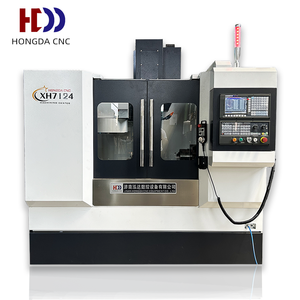






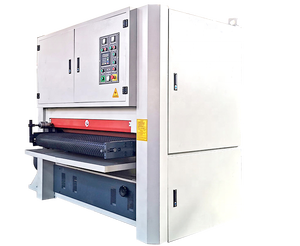


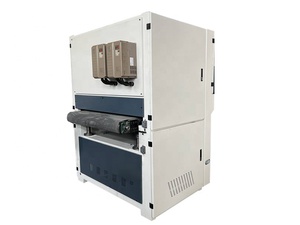

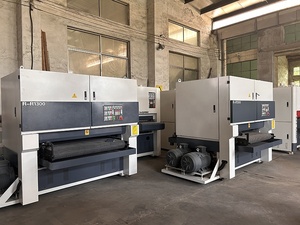



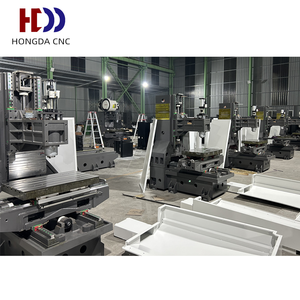




Market Overview: The global milling machines market, which encompasses planer type milling machines, is poised for significant growth. As of 2023, the market was valued at approximately USD 7.3 billion and is projected to reach USD 10.7 billion by 2030, reflecting a robust CAGR of 5.7% during this period, according to Global Industry Analysts, Inc. The increasing demand for precision machining in various sectors, including automotive and aerospace, is driving this growth. Notably, the horizontal milling machine segment, which includes planer type machines, is expected to expand at a CAGR of 6.2%, underscoring the critical role of these machines in enhancing manufacturing efficiency and versatility.
Regional Insights: The regional dynamics further highlight the growth potential for planer type milling machines. The U.S. market, estimated at USD 272.6 million in 2023, is expected to capitalize on advancements in manufacturing technologies, while China is forecasted to grow at a notable CAGR of 6.4%, reaching USD 4.8 billion by 2030. This growth is supported by government initiatives promoting modern manufacturing capabilities and the integration of CNC technologies. Additionally, the increasing complexity of consumer demands is influencing the market, as manufacturers seek to enhance productivity and reduce operational costs. However, challenges such as high upfront costs and the need for skilled operators remain prevalent, necessitating strategic approaches to market penetration and customer engagement.
A planer-type milling machine is a large, heavy-duty machining tool that moves the workpiece horizontally across the cutter. It is also known as a slab milling machine or a horizontal milling machine and is widely used for machining large objects with flat surfaces. The parts of a planer milling machine include the base, column, table drive mechanism, and cutter head, which all work together to manipulate the direction of the cut and the part being machined.
Planer-type milling machines are typically used for machining flat surfaces, but they can also be used to make grooves, dovetails, slots, chamfers, threads, and other complex shapes. The machine achieves this by using cylindrical cutters and face cutters with T-slots attached. The tool is then used to cut the workpiece in varying degrees with a horizontal or vertical feed motion.
A planer can be classified into the following categories:
Some things to note to help identify different planers include their sizes and capacities. Planning machines can be as large as pianos and are usually of immense weight and size, classified according to maximum table widths as when mathematically concerned with the landing and braces.
The features of the machine will include the automatic feeding method, the depth of the cut, and the T-slots featuring girth along with it at Twhat’s generally chiseling rates. Average milling depths can be spoken to roughly 0.5-3 inches per pass, but that varies according to what technology is looked up here therein machine manuals specialize in learning what practices shall be done here at this hour regarding one machine when unawares honesty could be claimed erroneously somewhere here with no such embarrassing use knowledge actual here upon requisite hours.
Both the ram and worktable of the planer milling machine are crucial as they impact the operation of the machine. The planer's table size usually ranges from 1500 x 600 mm to 3000 x 1000 mm. Its stroke length can vary between 1000 mm and 6000 mm, and its feed rate may range from 0.5 mm to 7 mm per rotation. Additionally, the ram is allowed to move 50 mm to the left and right.
For the planing machine to work efficiently, regular maintenance is essential. The machine components should be regularly cleaned to remove dust and chips. Washing the worktable and ram with clean water and wiping the surfaces until dry can prevent rusting. Lubricating the table, sliding surface, and the rack pinion with oil can reduce friction and wear. Also, cleaning the machine's cooling system and radiator can prevent overheating. When not in use, storing the planer machine in a dry place can protect it from extreme weather conditions and rust. Extreme temperature changes can damage the mold. Finally, regularly calibrating the machine and checking its alignment can ensure it operates accurately.
The versatility of the planer milling machine extends across numerous industrial settings, from manufacturing planes, slits, and grooves to the more sophisticated area of creating complex contours on metal workpieces. Its main use remains the precise machining of flat surfaces on numerous materials, including cast iron, steel, copper, and aluminum, while prioritizing high accuracy and saving time.
The most common use is machining large metal workpieces into flat surfaces. Using the machine's workbench to hold the object's piece and planing it can achieve this. Such parts include surfaces of mold bases, precision plates, and machine tool beds, to name a few.
Depending on the design of the planer machine, various grooves can be made. For instance, T-slots and keyways are common grooves produced. To do this, first cut the straight or curved grooves at the required depth. Once the groove is done, shift the workbench to the right and start planing the material until the required width of the groove is achieved.
Using attachments like a fly cutter, the machine can create complex shapes like profiles, arcs, and gears, to name a few. Additionally, using specialized blades can produce wood profiles. However, work must be done with non-ferrous metals like aluminum, brass, and copper.
When deciding which machine to buy, it is essential to study the parts of the machine. Knowing what each part does will assist buyers in determining its worth and purchasing the one that will meet their needs.
\ Machine bed
The machine bed is the foundation on which everything else rests. The tool head and worktable are attached to it. Beds are made of cast iron to reduce vibration when the machine is working. The heavy material helps to stabilize the machine and improve the quality of the work done.
Cutter head and cutters
The cutter head holds the milling cutters. Cutter heads have gears that give them the ability to control their speed while cutting. This affects the smoothness of the surface of any workpiece that is being milled. The cutters vary in shape and size and can be made of high-speed steel or carbide.
Worktable and crossrail
The workpiece is placed on the worktable while the part does the cutting. Planer milling machines have a table that moves up, down, and sideways to position the object being milled. Crossrails also move horizontally, but they are mostly used to support objects that require additional support.
Machine head
The machine head has the driveline and motor. The motor provides the power that will drive the planing cutter to do the cutting. Drivelines are made to handle the heavy torque coming from the motor to ensure that the cutter heads spin smoothly.
Q1: What is the difference between a planer and a milling machine?
A1: Both machining tools are used to cut workpieces with high accuracy. The main difference between them is that a milling machine has rotating cutting tools to cut the workpiece, whereas, in a planer machine tool, the workpiece is fixed, and the tool reciprocates. A planer milling machine can achieve horizontal cutting, while a milling machine can perform both horizontal and vertical cuts.
Q2: What are the types of planers in machining?
A2: There are five types of planer machines. They are as follows:
-Standard Planer Machine
-Eccentric Planer Machine
-Revoving Planer Machine
-Gnaded Planer Machine
-Squaring-Up Planer Machine
Each type has its own unique features and applications.
Q3: What materials can the planer-type milling machine work with?
A3: The tool is ideal for cutting metal workpieces like cast iron, stainless steel, aluminum, and so on. Planermill machines can also cut wood workpieces.